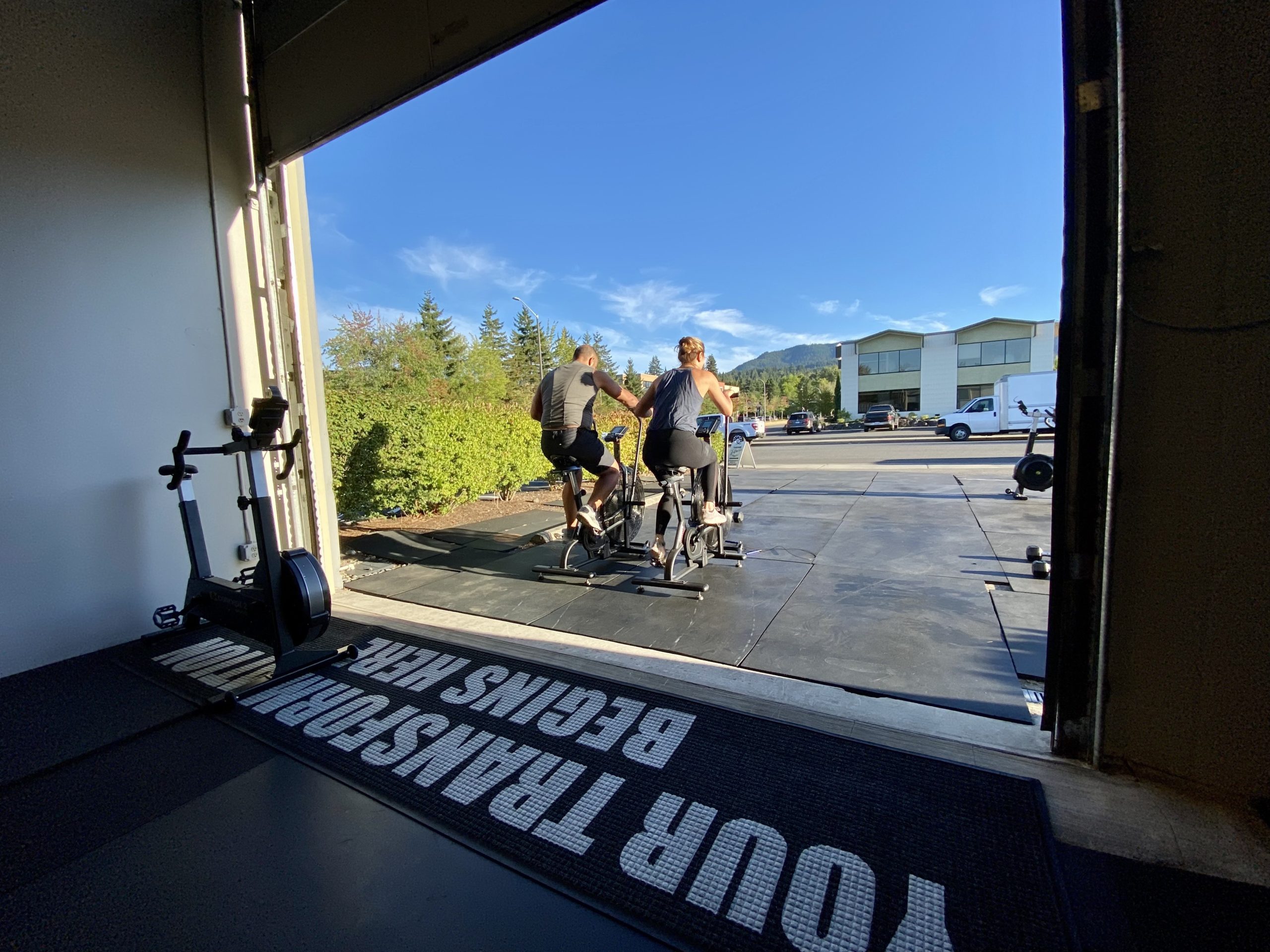Sweat Together

You know that saying "couples that sweat together stays together?" There may be some truth to it and here's what we know.
Increase your happiness with your relationship.
There are lab studies that show that couples report feeling more satisfied with their relationships and more in love with their partner after participating in a physical challenge or activity. The physiological arousal, rather than the novelty of the challenge or physical activity is what drives romantic attraction (Lewandowski, & Aron, 2004). Sharing a fitness goal such as training for a 5k, taking regular runs together, or having a date night at the gym can boost the quality of your romantic relationship.
Improve the efficiency of your workouts
Bringing your romantic partner to the gym may be a great way to boost your energy output. A partner's presence can improve speed without you even being aware of this positive influence (Bond & Titus, 1983). Talk about a free boost.
Make your partner fall in love with you.
Research shows that exercise induces the symptoms of physiological arousal—sweaty hands, a racing pulse, and shortness of breath. These symptoms often mirror the thrill of romantic attraction and are likely to boost your attractiveness in your partner's eyes. Score.
Help you achieve your fitness goals.
When partners mutually care about fitness (their own and their partners), it becomes easier to achieve fitness goals together. A study of heterosexual couples showed that husbands are more likely to engage in physical activity when their wives offer more support and health-related comments (Skoyen, Blank, Corkery, & Butler, 2013).
Sharing the journey of fitness with your spouse from a daily morning walk to a tough WOD, max-out strength session to a yoga class can help you both get closer to your health and fitness goals.
Increase your emotional bond.
When you work out with your spouse, you create a context where you can coordinate your actions. For example, lifting weights in rhythm, matching a walking or running pace, or tossing a medicine ball back and forth can create nonverbal matching or mimicry which can be mutually beneficial (Stel & Vonk, 2010).
Nonverbal mimicry strengthens your emotional connection to your partner and couples who engage in it are more likely to report increased feelings of bonding. Joint physical fitness provides an opportunity to create an enhanced connection, benefiting both individual's health and the overall relationship.
We can't think of better reasons to work out with your spouse. Speaking of working out with a loved one, we offer a family add-on that gets you a discounted rate of the second membership as long as it's on the same credit card.
Questions? Reach out to us and let us know how we can help you!
Sources:
- Aron, A., Norman, C. C., Aron, E. N., McKenna, C., & Heyman, R. E. (2000). Couples' shared participation in novel and arousing activities and experienced relationship quality. Journal of Personality and Social Psychology, 78, 273-284.
- Bond, C. F., & Titus, L. J. (1983). Social facilitation: a meta-analysis of 241 studies. Psychological Bulletin, 94(2), 265-292.
- Dutton, D. G., & Aron, A. P. (1974). Some evidence for heightened sexual attraction under conditions of high anxiety. Journal of Personality and Social Psychology, 30, 510-517.
- https://www.psychologytoday.com/us/blog/meet-catch-and-keep/201401/5-reasons-why-couples-who-sweat-together-stay-together
